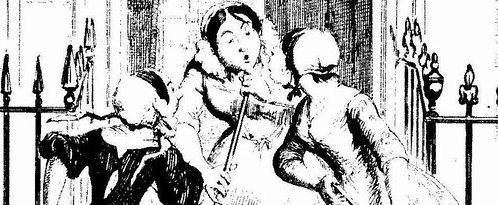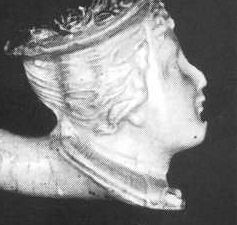Venus in the Dark: Blackness and Beauty in Popular Culture- Review
For any woman growing up in, and living in, the Western world, issues of body image, body shape and sexuality can be problematic. For black women, there's an additional layer of complexity, of danger, of risk of being dangerously misunderstood. In Venus in the Dark: Blackness and Beauty in Popular Culture, Janell Hobson explores the centuries of racist exploitation that have produced this state of affairs - most recently brought into focus by the infamous Janet Jackson Superbowl incident - and ways in which black women creative artists have tried to confront it.
At the centre of Hobson's account is the life, and posthumous treatment of Sara Baartman, a woman who was brought from what is now South Africa to England and France and between 1810 and 1815 exhibited as the "Hottentot Venus" . Particularly exciting (in several senses of that term) to those who paid to see her sometimes unclad body were her supposedly abnormally large buttocks and genitals. After she died, her body was dissected and her brain and genitals preserved, with casts of her body and her skeleton.
Well, you might say, that was a past, barbaric age. Then you learn that it was only in 2002 that these remains were finally returned to South Africa, after a long campaign, and given a proper burial.
And, Hobson, points out, the history of exploitative, demeaning use of black bodies, particularly female bodies, is a continuous one. Even anti-slavery campaigners used sexualised images of flogged and otherwise abused women for their cause, then images of naked black bodies, both male and female, were used by the National Geographic Society (among others) in "anatomical education", "primitive-style" nudity being acceptable where "civilised" was not, which of course provoked a suppressed erotic reading of these supposedly pedagogic materials.
Hobson says:
"When this colonial historic imagery combines with the more familiar American popular iconography of desexualised, fully clothed mammy images and celebratory imagery of white female beauty, we may be able to more fully comprehend interstices between race and gender that shape our uneasy responses to sexualised visual representations of black women".
How, she asks:
"Can a black woman hold up a mirror that reveals an alternative image of herself, free from the iconographic history in dominant culture that cast black female bodies as illicit, hypersexed, primitive and obscene?"
As these extracts suggest, Hobson's writing is intelligent without being buried in that bane of so many otherwise fascinating texts, academic jargon, despite her position in women's studies. This is a book accessible to virtually any reader, and one that many black women, and their white compatriots, would surely find illuminating in their encounters with cultural conundrums of competing demands for sexual display and "modesty".
Some, however, might find confrontational the fact that Venus in the Dark contains representations of the very images that it is critiquing, including those of Baartman. Hobson says: "Such images need to be confronted". I agree. Surely to write about these images without presenting them is only to magnify their power and malevolence.
Where Hobson, perhaps inevitably, is less successful, is in her prescriptions for dealing with the issue. Her chosen arena is in cultural construction, mostly "elite" art, with some popular intrusions. This is not my specialist area, but I do feel she's overly prescriptive in her readings of artworks, and her classifications of them as "successes" or "failures" in their treatment of the Hottentot Venus image.
Among the artists whose treatment of Baartmen she addresses are the poet Elizabeth Alexander, the writer Toni Morrison, the artists Penny Siopis, Renee Cox, Carla Williams and Willie Bester, and the digital artist Mara Verna, who has a website dramatisation.
In "The 'batty politics': towards an aesthetic of the black female body", Hobson then looks at aspects of popular culture, from the tennis champion Serena Williams, the entertainers Josephine Baker and Grace Jones, the dancers Katherine Dunham and Pearl Primus, and hip hop musicians. Hobson says of Jennifer Lopez:
"Dominant culture later came to celebrate Lopez's behind as part of a recognition of "exotic" and "hot" Latinas, women perceived as "more sexual" than white women but "less obscene" than black women ... what has not changed is the racism and sexism underlying her popularity". (p. 103)
Hobson's prescription is that black women "must confront the prevailing imagery of grotesque derrieres and black female hypersexuality to distinguish the myths and lies from our own truths and the ways we wish to represent ourselves." (p. 112)
Finally, I have to share one account from the book that I found particularly horrifying, and that every woman should know:
The scientific display of Baartman's fragmented body would further shape other acts committed against black female bodies. This is exemplified specifically in the founding of gynecology, as antebellum physician J. Marion Sims invented the speculum while practising surgical experiments on enslaved black women in Alabama from 1845 to 1849. One named Anarcha would be operated on thirty times without anesthesia." (p. 48)
This book isn't perfect, but there's much in it that anyone who confronts issues of gender and race should know and think about, and that means everyone.
Women, History, Race







0 Comments:
Post a Comment
<< Home